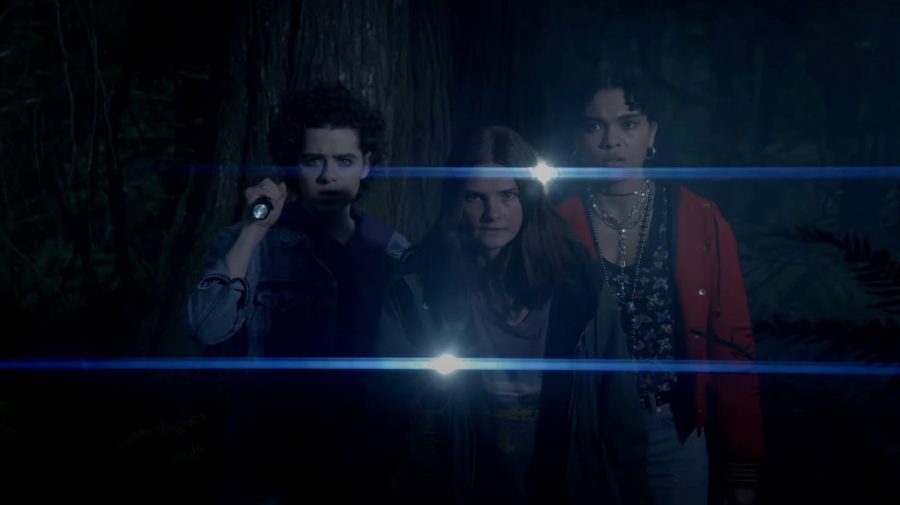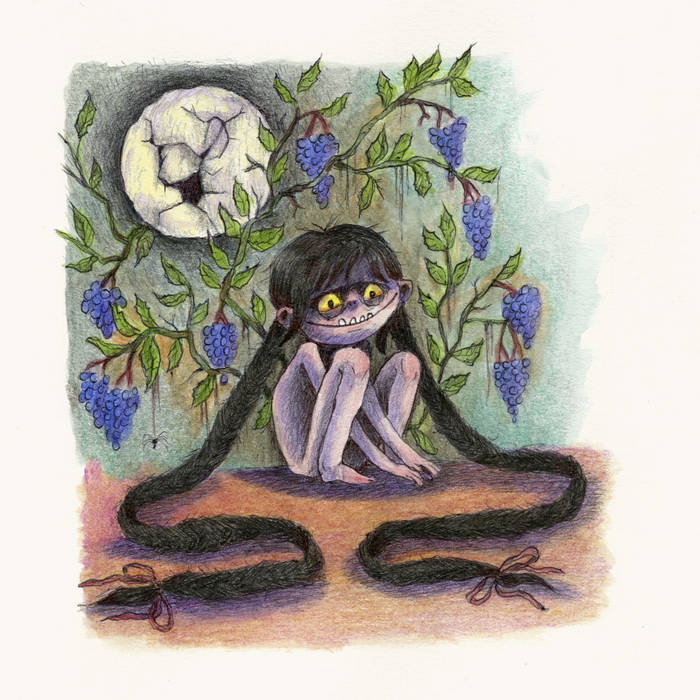“The Girl in the Woods” is a decent attempt at YA horror, but it ultimately fails to impress due to overused slang and pacing issues.
Halfway through the first episode of “The Girl in the Woods,” a young adult fiction horror series set in sleepy West Pine, Oregon, I thought to myself, “What have I signed up to watch?” The show had started off normal enough: a mysterious girl named Carrie (Stefanie Scott), dressed in minimalist cult garb, runs away from a door she’d been guarding in the middle of the woods. Her daring escape from the cult that raised her served as an intriguing opening sequence. Then, something strange happened. The video squished into the rectangular aspect ratio of an iPhone screen and a series of “comedic” TikToks played. In one of them, two teenagers squirted mustard and ketchup straight into their mouths, declaring, “This is how everyone eats in West Pine!” If you’re thinking, as I did, that they were the obligatory annoying characters that would be killed off first, you’d be wrong. These were the main characters, Tasha (Sofia Bryant) and Nolan (Misha Osherovich). It was then that the true horror of “The Girl in the Woods” dawned on me: I had to watch seven more episodes of teenagers talking like Tumblr blogs and Urban Dictionary posts come to life.
Despite the cringey TikToks and outdated slang, I decided to stick it out and finish the series — and I’m glad I did. Once I was able to look past the excessive teenspeak, I found myself enjoying how “The Girl in the Woods” places its protagonists in the present day. As they figure out how to close the door to Gehenna, the hell-world on the other side of the door Carrie guarded, the main trio has to face the more familiar evils of debt and identity crisis. Tasha lost her mother to illness and her father must work long hours in the West Pine nickel mines to pay off their medical debt. Nolan pines for Tasha, but is unsure if she’ll requite their feelings when she finds out they identify as nonbinary. Nolan’s struggle with their identity is one of the more captivating parts of the series, culminating in an emotional scene where they scream at themselves in the mirror to “be a man” in order to gain Tasha’s affection, not realizing that Tasha accepts them as they are. Scott as Carrie similarly does a good job of slowly crumbling her character’s stoic facade, showing how Carrie softens as she unlearns the brainwashing done to her by the Disciples of Dawn cult.
One of the selling points of the series, an original on the NBC streaming service Peacock, is that the first four episodes are directed by Krysten Ritter (“Breaking Bad,” “Jessica Jones”). Unfortunately, the first half of the series is outshined by the second. I found myself delightfully surprised by the suspenseful low angles, pans, and impressive shifts in focus in the series’ fifth episode. Before then, the series had failed to impress with unremarkable shots and a cheesy makeover montage. The fifth episode has the advantage of riding the momentum of the show’s midpoint shift, when our trio is split up and must each battle a separate antagonist. From there until the end of the season’s final episode, the show is newly engaging. The pacing speeds up, and episodes end on cliffhangers that make you want to keep watching. There’s an increase in bloodshed and shockingly brutal character deaths worthy of the YA horror genre. All of the beats for the plot and character arcs are in place — but something doesn’t feel right.
The season is only eight episodes long, with each episode averaging 25 minutes. This time restraint, along with a familiar story reminiscent of Netflix’s “Stranger Things” and Amazon’s “Hanna,” makes “The Girl in the Woods” feel flat and uninspired. Whenever a conflict arises, it’s resolved almost too quickly. Carrie is able to trick two people in two different scenes with fake tears. An argument about Tasha spreading Carrie’s image around the Internet for clout is brought up and dropped within the space of a few lines. The series has time for extended flashbacks to Carrie’s warrior training, but not for a real resolution at the end of the final episode. Instead, we’re rushed into the setup for a second season that, based on the flaws of the first one, might never come to be.
There’s a scene near the end of the show where Tasha and Carrie are talking about their love-hate relationships with West Pine and the cult, respectively. Their conversation leads them to shout, “F— you, West Pine, I love you,” and “F— you, Disciples of Dawn, I love you,” a fitting representation of their ambivalent affection for these places. I think that phrasing doubles as the appropriate reaction after watching “The Girl in the Woods.” It pulls you in with its mystery-driven plot, LGBTQ+ representation, and unsettling monsters — then Tasha says the word “wonkadonk” unironically.
Directed By: Krysten Ritter (Episodes 1-4); Jacob Chase (Episodes 5-8)
Starring: Stefanie Scott, Sofia Bryant, Misha Osherovich, Reed Diamond
Release Date: October 21, 2021
Grade: B
Image courtesy of Slashfilm.
TV Review: “The Girl in the Woods”
Oct 31, 2021
0
About the Contributor

Bailey Bujnosek, Senior Staff Writer
Bailey is a fourth-year English literature and psychology double-major who watches too much reality tv. She likes listening to Mitski, Ricky Montgomery, & Fiona Apple. Her favorite movie is “Whiplash,” the “Black Swan” of jazz drumming.
More to Discover









